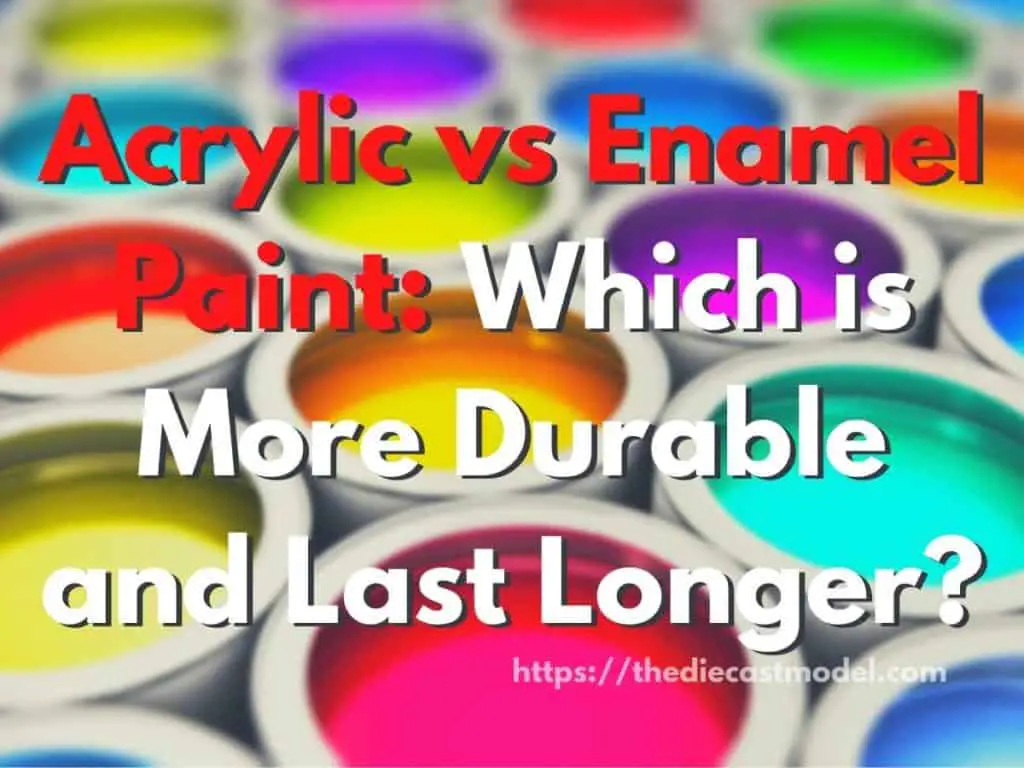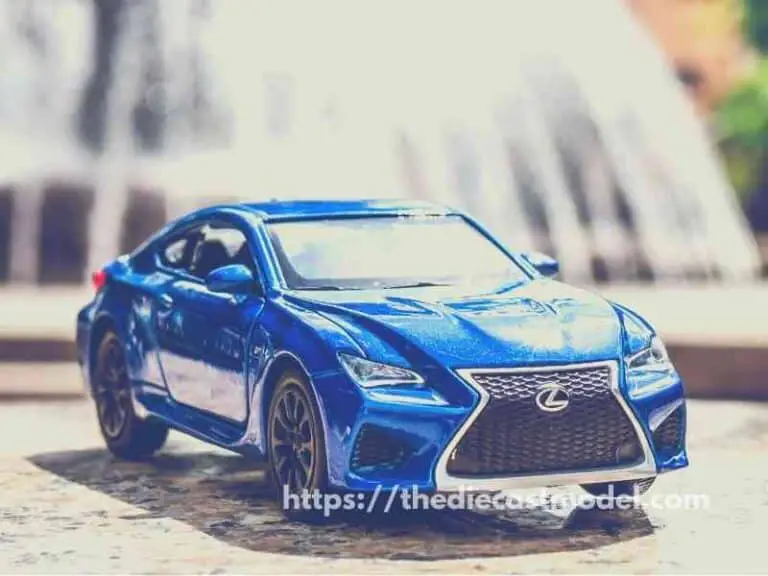Acrylic vs Enamel Paint: Which is More Durable and Last Longer?
If you are looking for paint that will last longer in your home, you may want to consider one of the options in acrylic or enamel paint. These paints are known for being durable and lasting up to 10 years on average. Acrylic is a water-based paint with a long-lasting finish that won’t peel or chip. Enamel is also an oil-based paint but with a glossier finish. But which is more durable? Which lasts longer?
As a general rule, enamel paints are more durable than acrylic paint. However, acrylic paint dries faster, is water-soluble, and doesn’t produce toxic odors. Thus, it is essential to know what type of paint is suitable for your painting job.
This blog post will talk about the durability of both these paints. In addition, we will talk about what we can do to make the paint more durable and how to apply them appropriately to make this paint produce a perfect, smooth, and durable finish.

Is acrylic or enamel paint durable?
Both acrylic and enamel paints are durable. However, generally speaking, enamel paints tend to be more durable than acrylic paint. However, with proper application such as using primers and topcoats, acrylic paints can provide a very durable finish.
Even if enamel paint is generally more durable, some things make it not ideal for painters.
One of which is the odor. Enamel paints tend to produce a unique odor that most don’t like because of their chemical composition.
Because it is oil-soluble, it tends to have what others call a foul odor.
Furthermore, these paints dry longer than acrylic paints. This leaves more room to mess with the paint while drying.
Another issue with enamel paint is its tendency to oxidize. Since enamel paints are oil-soluble and prone to oxidation, it is common for them to change color over time.
That is also why we can see white paint that turns yellow over the years. But, again, this is most likely because the paint used is enamel paint.
Furthermore, the choices for enamel paint colors are limited, while acrylic paints tend to have a wide variety of colors available.
All of these are things to consider when choosing enamel paint. However, while it is generally more durable, it has its set of disadvantages which consumers should be aware of.
However, even if there are many disadvantages to using enamel, one of the main benefits is its simplicity.
Since enamel paints are already durable, primers and a clear coat are recommended but optional. This is because enamel paints can last long in itself without any need for these steps.
Thus, while they tend to dry longer, the shorter drying time of acrylic paint is often offset by the other steps necessary to make the paint durable.
Priming and clear coating are often necessary when using acrylic paints over enamel paint. But why? What makes enamel paint good enough not to require these steps. That’s our topic for the following sections.
Do enamel or acrylic paints need a clear coat?
Enamel paints don’t need a clear coat or top coat because it is durable enough to withstand the weather. Furthermore, enamel paints tend to be waterproof because it is oil soluble instead of water-soluble. However, some prefer using a clear coat on enamel paints to protect the paint.
A clear coat is considered the added protection of paint against the harsh environment.
Since enamel paints are already durable, adding a clear coat is often not required.
However, there is no harm in putting a clear coat on enamel paints since it protects the paint from oxidation.
If you remember earlier, I talked about oxidation, which turns enamel paint yellowish through time.
Oxidation is a natural process when the paint is exposed to the air. However, we can delay or prevent exposing the paint to air by applying a clear coat.
Thus, with a clean coat, not only would the paint last longer, but it will also delay or prevent the paint from changing its color.
But what about acrylics? Does acrylic paint require a top coat?
Acrylic paints often need a clear coat or a top coat because these paints aren’t as durable as other paints. Furthermore, acrylic paints produce a matte finish. That’s why some prefer adding a clear coat to acrylic paint to create a glossy finish.
While it is only recommended to use a clear coat on enamel paints, acrylic paints require clear coats.
One reason is that acrylic paints tend to be water-soluble. This means they are less weatherproof compared to enamel paints.
Putting a topcoat offers the protection the paint needs against harsh weather conditions.
Furthermore, since most acrylic paint produces a matte finish, some painters prefer putting some shine or gloss in their finish. That’s where they add a clear coat to make their paint shine.
However, clear coating is not the only necessary step in using acrylic paint as we will discuss another way to make acrylic paint durable: primers.
How long does Acrylic and Enamel paint last?
Generally speaking, both acrylic and enamel paint lasts for about 10 years without any need for repainting. However, poor painting practices can make these paints last as short as 2 years. Furthermore, enamel paints tend to start turning yellowish as it gets older due to oxidation.
One poor painting practice that makes the paint last shorter is not using a primer.
Basically, a primer serves as the medium between the paint and the body.
For example, one of the biggest challenges for painters is to paint metals.
The problem here is that paint, whether enamel or acrylic, has a hard time sticking with metals. Thus, painting metals would usually cause air bubbles or wrinkling.
We need something that sticks well in both the metal and the paint to prevent this. That’s where primers come into place.
Primers serve as the middlemen between these two. Since it sticks to both the paint and the body, it can be used as the medium to help the paint attach to the body.
With this, you will reduce the likelihood of the paint peeling away from the body. In addition, this will make the paint last longer.
In general, acrylic paints need a primer to enhance their durability further. On the other hand, enamel paints don’t require primers when painting, but they are recommended.
Using primers with enamel paint will further increase its durability. Furthermore, enamel paints don’t stick well with all surfaces. That’s where primers can help.
With these practices, paint can last up to 10 years. Sometimes, it can even go as high as 20.
However, while many steps are required to make acrylic paint durable, why do people still prefer using it? That’s what we will talk about in the next section.
Which is better, enamel or acrylic paint?
Acrylic paint is better for beginners in the model painting space. This is because acrylic paints dry faster, so there is less room for messing up the paint. However, since acrylic paint recommends and requires primers and topcoats, enamel paint is better when painting larger areas to lessen the workload.
We already talked about how enamel paint is more durable and requires fewer steps than acrylic paint.
Furthermore, enamel paints already produce a glossy finish which most modelers like.
But why do some modelers stick with using acrylic paint?
While acrylic paint in model painting requires many steps, a model paint is usually small enough for the additional work to be negligible.
Furthermore, clear coating acrylic paint puts the modeler in charge of how much gloss they want rather than making the enamel paint provide the glossiness.
That’s why some modelers still prefer acrylic paint when painting small objects. However, using acrylic paint on large areas might not be worth the additional workload.
Furthermore, acrylic paint provides a wide variety of colors, while enamel paints tend to stick to the basic colors.
It is crucial to have a wide variety of colors for the painting job to a modeler.
Thus, what type of paint depends on the modeler’s preference.
While enamel paint tends to be more durable than acrylic paint, there are ways to apply it to make it last as long as enamel.
With this, I leave the decision to you, as the painter, to choose what you want.
However, I recommend using acrylic for model painting since you’ll enjoy the entire painting process from priming to coating as they are necessary steps.
Furthermore, since acrylic paint dries quickly, it leaves less space for errors.
What’s Next? Now that you know how long paint usually lasts, do you know the signs to look for to tell if the paint shouldn’t be used? I made a post showing the signs to see if you should or shouldn’t use old paint to save you some trips to the hobby store. Here is the link: Can old paint be used?







